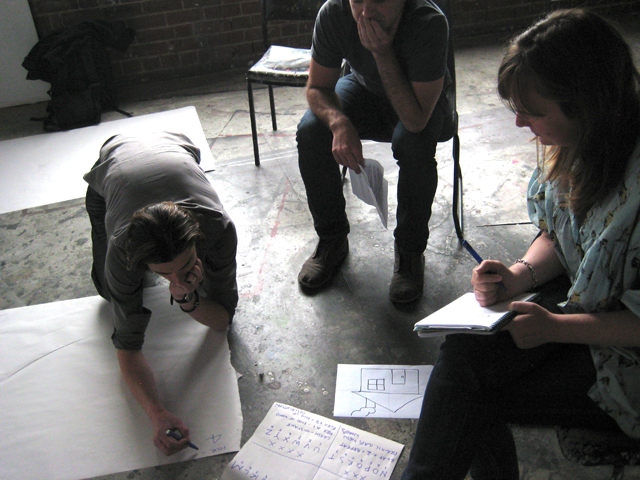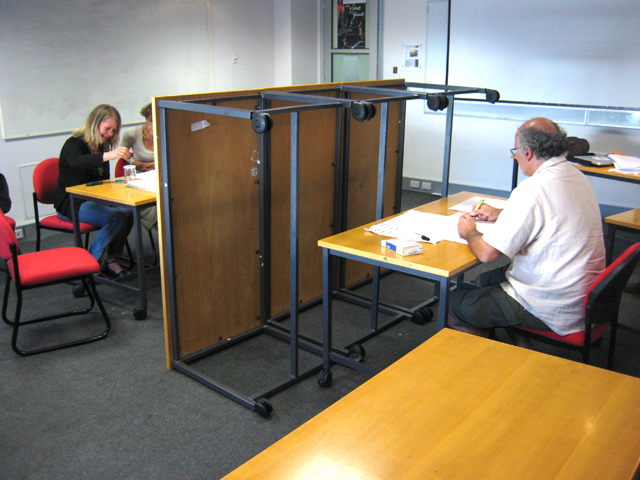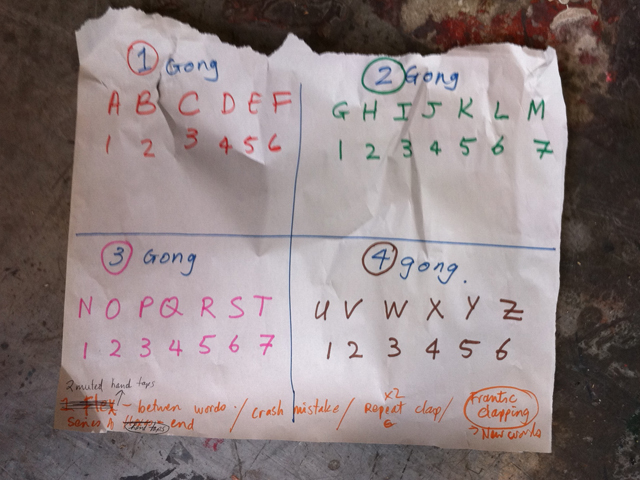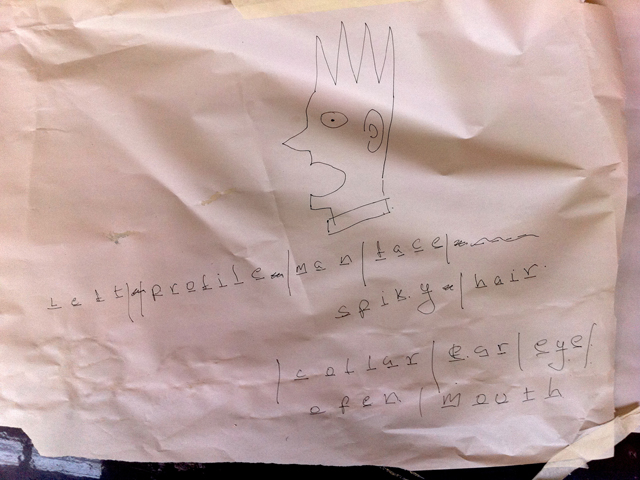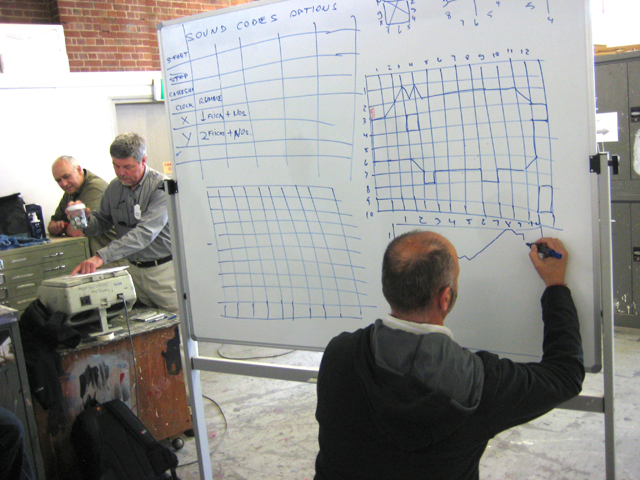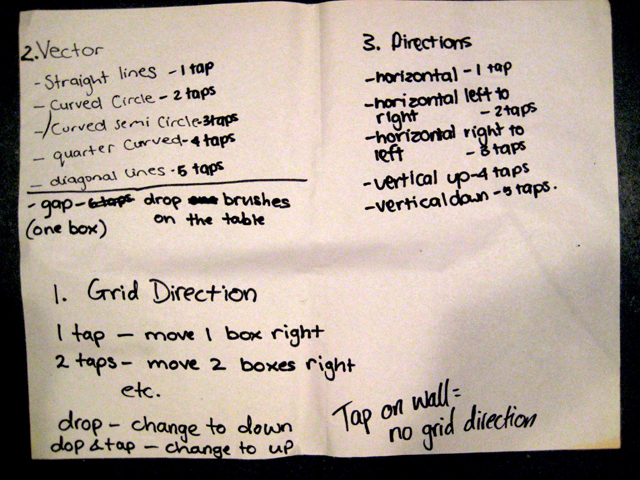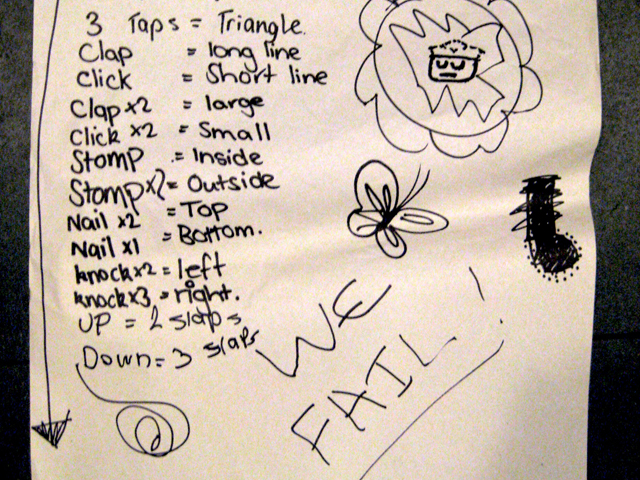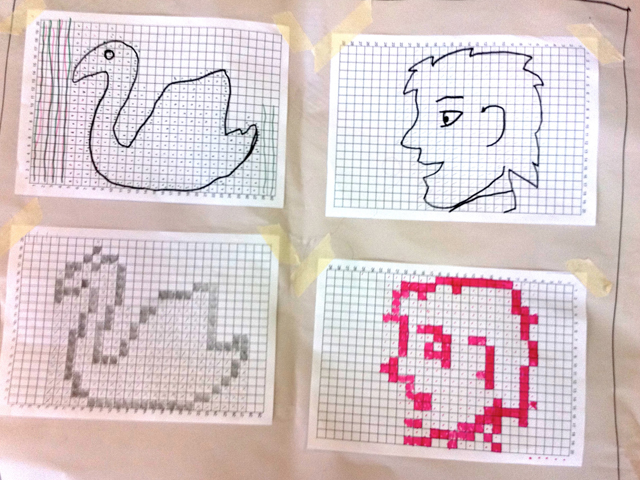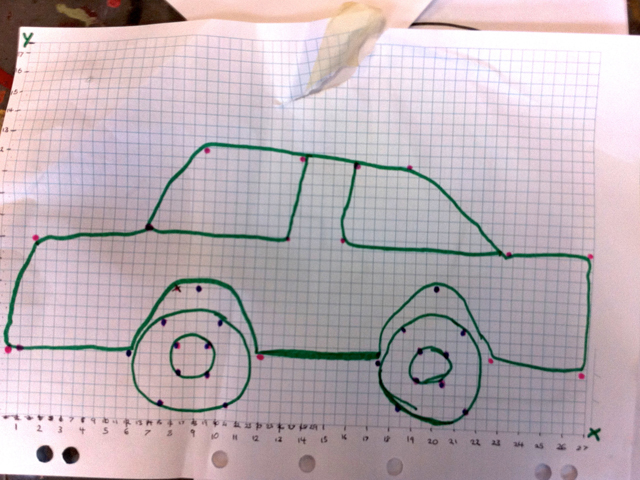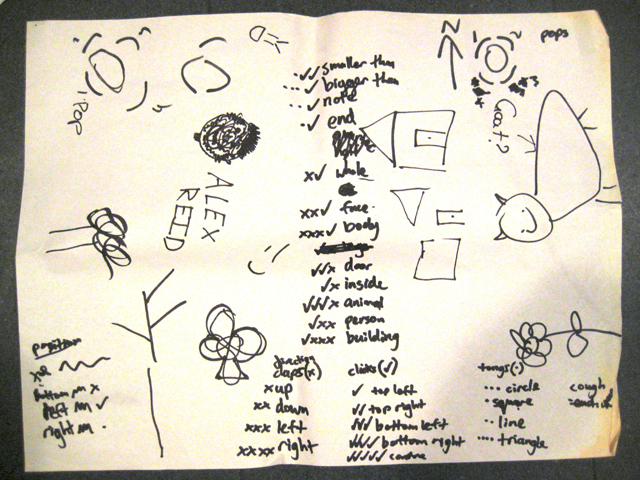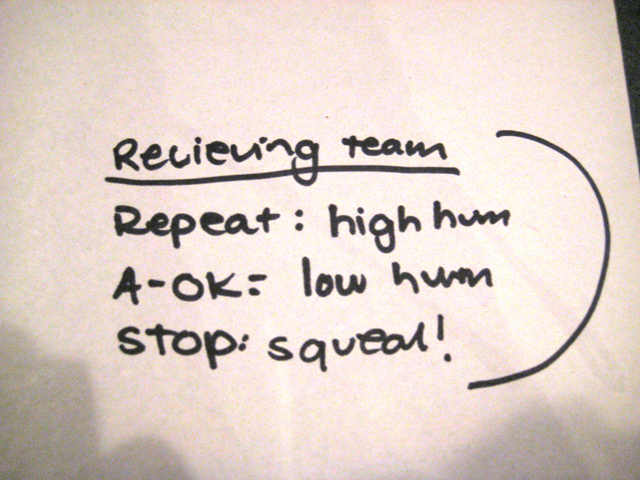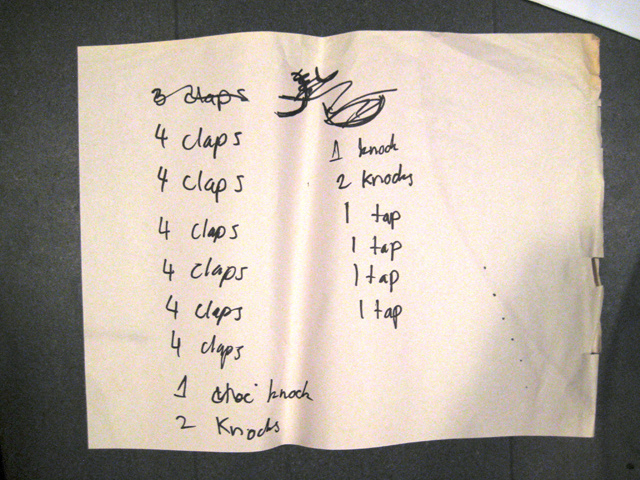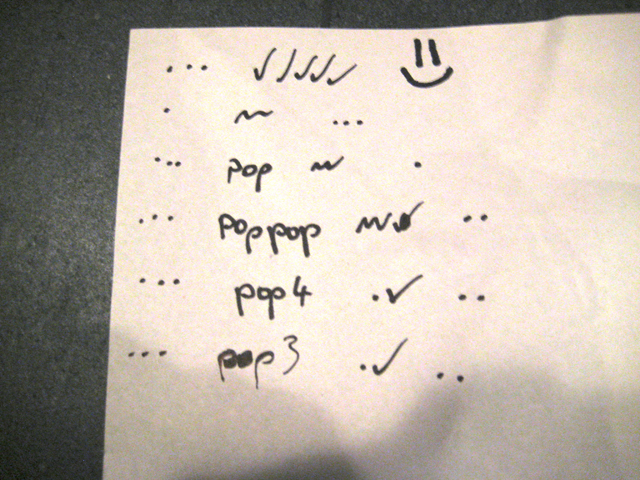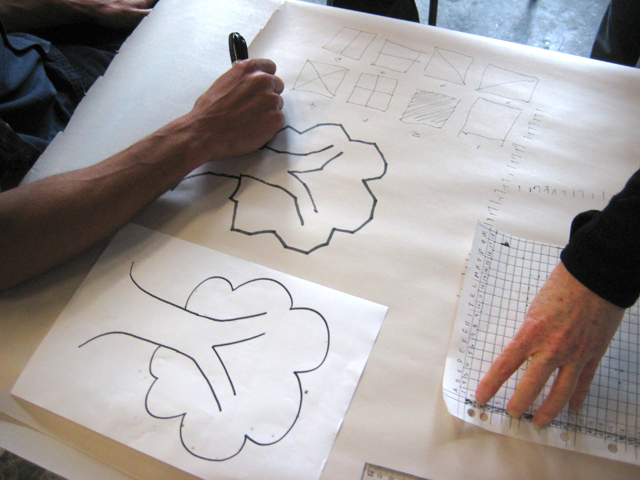The Human Fax Machine Experiment
Brogan Bunt and Lucas Ihlein
Reflections
The Human Fax Machine draws together two sets of codes: the formality of machine instructions and the much looser codes of human group interaction. As an introduction to the computational mindset, participants are given the task of devising some means of communicating an image from one group of people to another with simple sound signals. They may have only a wooden rattle, a container of shells or two forks that they can clang together, but they must somehow transmit the image across a small visual barrier to other members of their group so that the latter can reproduce it on butcher’s paper with marker pens.
This always proves a very challenging exercise and tends to produce all kinds of absurd and ingenious solutions. The groups are allocated some time to agree on a shared code and a set of communication protocols. Almost inevitably, however, they miss something, they fail to consider some crucial area of ambiguity or some fundamental potential for entropy and miscommunication. At times the issues revolve around a weakness in the formal code, at other times around human problems of performance, hearing, concentration and the etiquette of turn taking.
Broadly, we look for two sets of solutions: a raster-based approach that involves subdividing the image into a grid and transmitting binary information for each row and column square; and a vector-based approach that involves drawing shapes via linking together grid-based points. These neatly computational solutions do appear, but rarely in their pure logical form. Most often the code systems involve a hybrid of logical and human-perceptual, kinaesthetic schemas. Rather, for instance, than insisting on simply binary audio signals, groups tend to envisage rich and complex systems, exploiting dimensions of volume, duration, timbre, etc. Unsurprisingly, the more imaginative and nuanced the set of codes, the more likely that they are to come spectacularly undone.
Failure is an essential part of the exercise, helping to clarify what distinguishes computational systems from more informal systems of information handling and transmission. Over a number of iterations, however, groups prove remarkably successful in developing systems that marry algorithmic logic to human interaction, to actually transmit simple images with some reasonable level of accuracy. In the process, they gain a sense of the mixed, semi-human and semi-machinic character of programming languages.
Overall, if the exercise works, it is not only because it draws attention to and establishes curious links between two dimensions of code, but also because it sets a genuine challenge for participants. When first given the problem, many groups go completely blank for a few minutes, unable to think of any suitable means of rendering an image as a sequence of audio signals, but this is precisely also what leads them to subsequently develop all kinds of strange and novel solutions, and, as well, to actually become interested in what could seem a merely technical problem. In this manner, the exercise frames an instrumental problem in imaginative terms and the various solutions appear as pieces of more or less successful practical magic.
The crux of the problem lies in the requirement to generate a new language which is functional (i.e., it should actually work to communicate a basic ‘message’) and also scalable (ideally, the language which is developed could also be used to transmit a much more complex image-message). This requires not only the exercise of the metaphorical mind (“What solutions have I come across in the past that I could apply to this situation?”), but also the pragmatic mind (“My solution might work, but is it the most efficient available?”).
The Human Fax Machine is fundamentally social: solutions emerge from what makes sense within the small group itself, and depend on the ability to work together. Code systems that students invent will thus necessarily involve poetic idiosyncrasies and artful flourishes which effectively model the development of human culture on a small scale.
Instructions
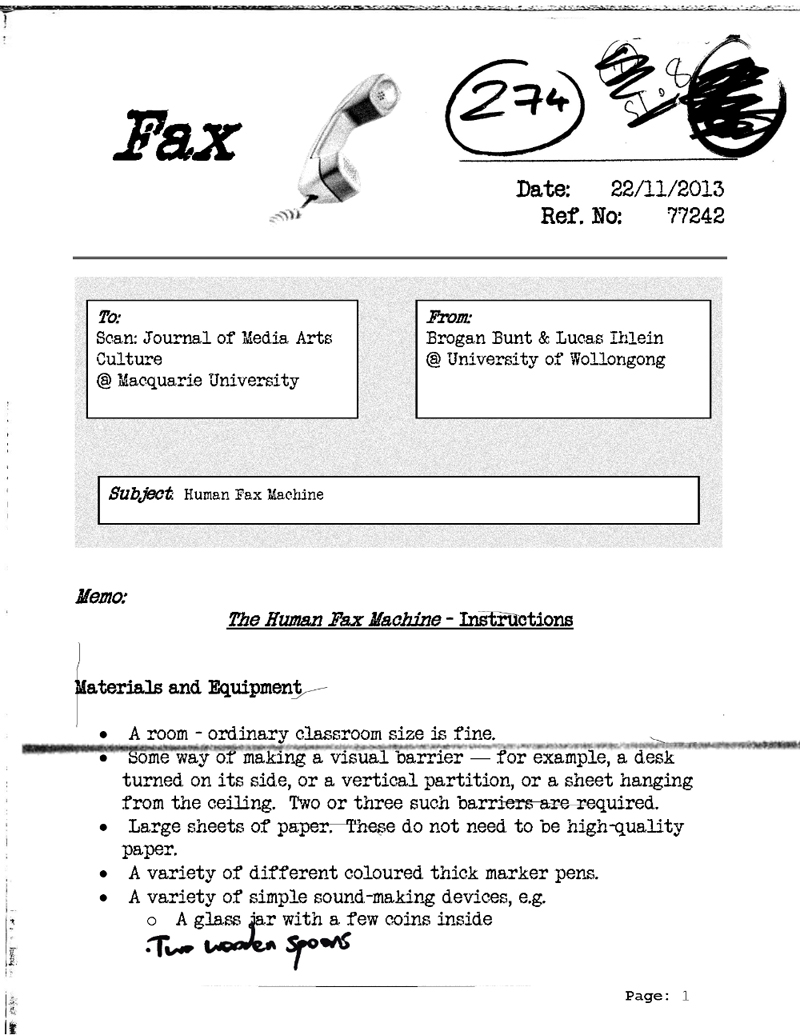

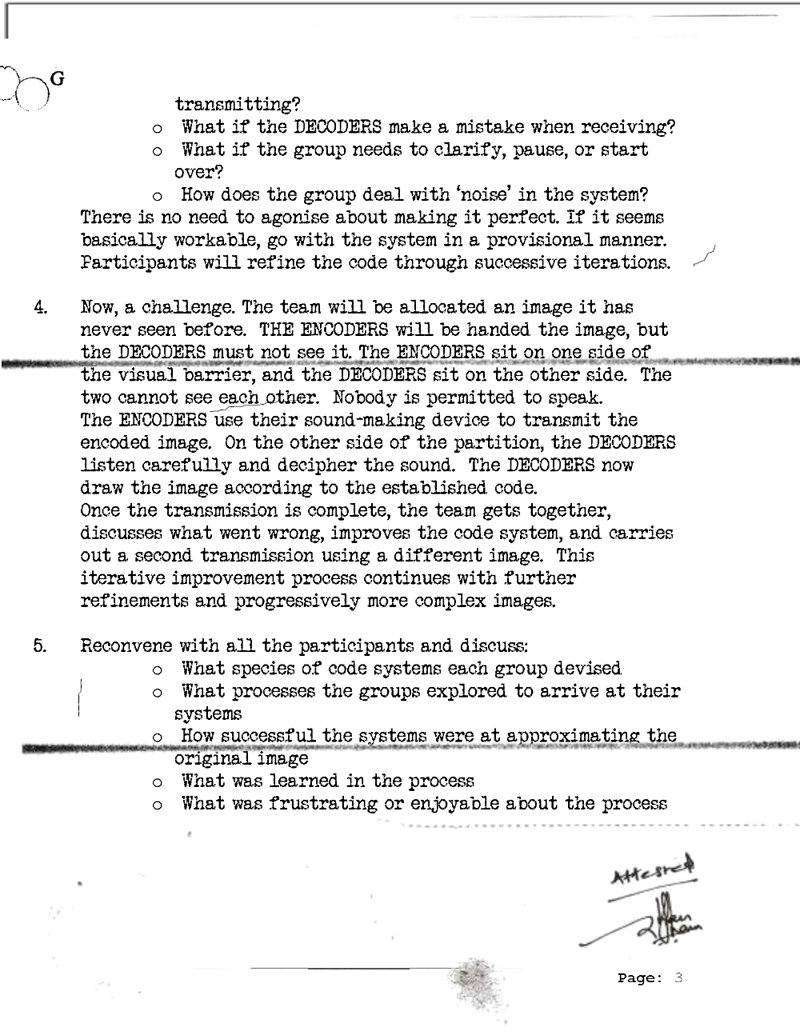
[Instructions 01-03 go here in order down the page; no captions or ‘Fig. x’ required.]
Documentation
In what follows, a set of images and videos are selected and captioned, to give a sense of the range of solutions which were generated during various Human Fax Machine workshops conducted between 2010 and 2012.
Several workshops were carried out at University of Wollongong, University of Tasmania, and Swinburne University, with participants ranging from undergraduate media arts students to academics and professionals in information technology.
The images are divided roughly into these sections:
The spatial set-up and performance of the activity:
- Creating the Code
- Transmitting the Code
- The set-up of the room
- Documentation of the performance
Solutions generated by workshop participants:
- Text-based Systems
- Vector-based Systems
- Hybrid Approaches
- Raster-based systems
- Semantic systems
Refinements via iteration:
- Building in Redundancy
- Devising Feedback signals
- Creating Efficiency
- Experiments with Compression
- Encoding before sending
Biographical Notes
Associate Professor Bunt is the Head of Postgraduate Studies and the Convenor of the Bachelor of Digital Media program, Faculty of Creative Arts, University of Wollongong. He is an experienced media arts producer and academic with two decades experience in the field of new media production and teaching. His work includes the spatial-exploratory documentary, Halfeti - Only Fish Shall Visit (2001), experimental software art projects such as Ice Time (2005), Um (2009) and Loom (2010), and a book, Risking Code: The Dilemmas and Possibilities of Software Art (2008).
Lucas Ihlein often works collaboratively with groups such as Big Fag Press, SquatSpace, Teaching and Learning Cinema and NUCA. His work can take the form of performances, expanded cinema events, re-enactments, lithographic prints, writing, public lectures and blogs. In recent years, Ihlein has been working on a series of ‘blogging as art’ projects which formed the basis for his PhD, completed in 2009 at Deakin University. Ihlein is a lecturer in Media Arts at University of Wollongong.
